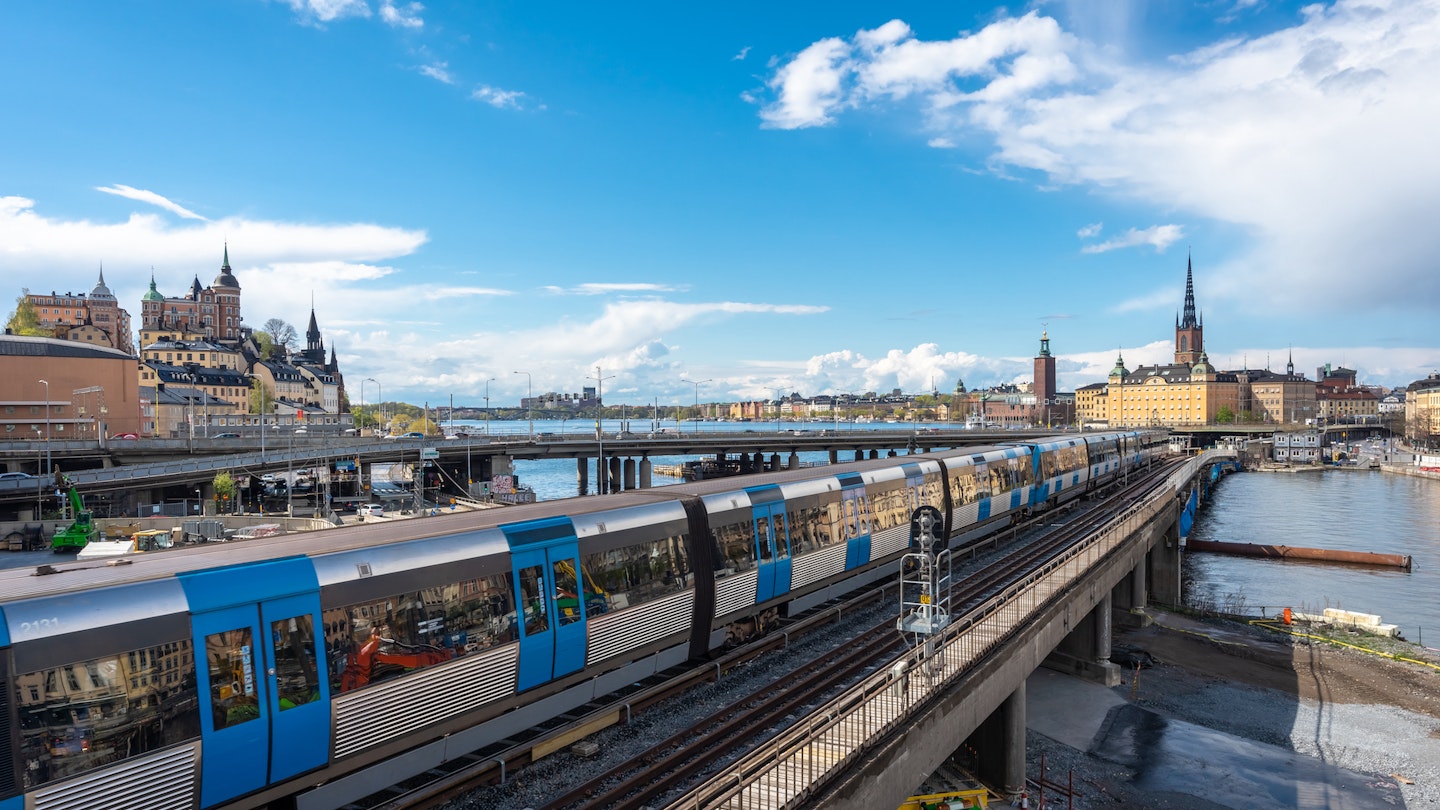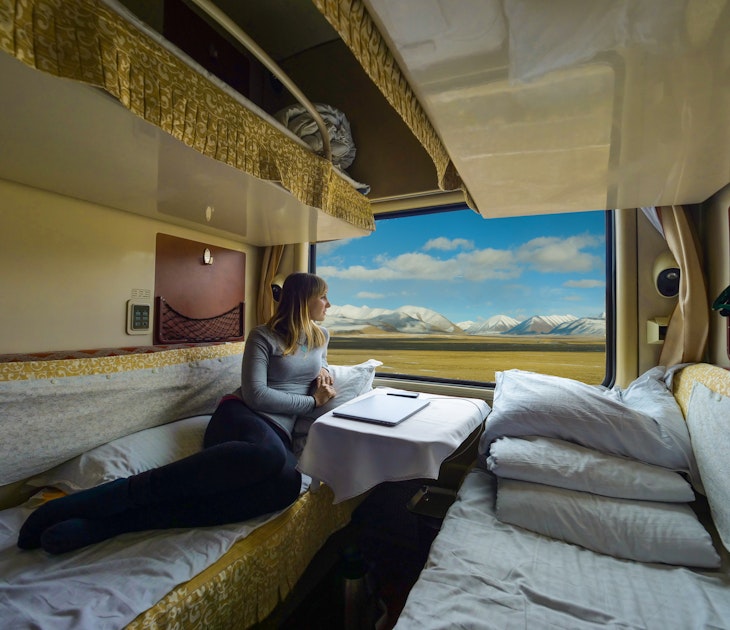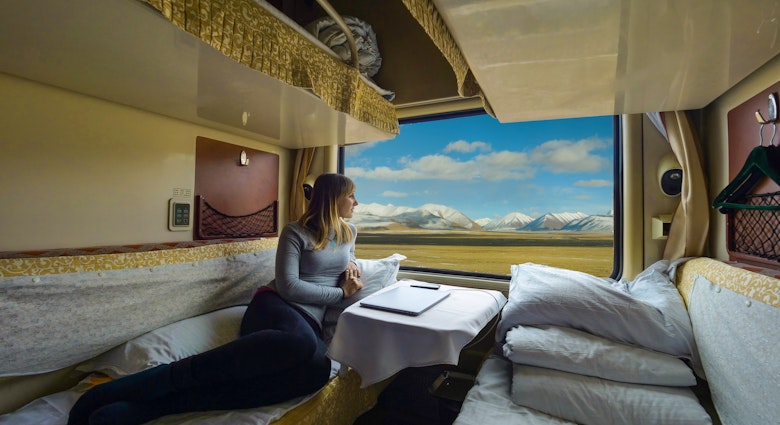Our slow travel series explores how you can take more mindful journeys by train, boat, bus or bike – with tips on how to reach your no-fly destination, and what to see and do along the way. Here, Lonely Planet's resident train expert Tom Hall takes us from London to Stockholm by train.
The announcement of the Hamburg-to-Stockholm EuroNight train in August 2021 was greeted with delight across Europe.
A high-profile addition to the continent’s international night-train options, the new service now also makes it possible to reach Stockholm from London by train in a single day. British travelers with a sense of adventure and an ecological conscience have rejoiced, and started making plans for a greener journey to Scandinavia.
In recent years, everyone from romantics to environmentally minded travelers have been looking for more slow-travel options across Europe. This demand has been met mostly by NightJet routes provided by ÖBB (Austrian Railways), radiating in all directions out of Vienna. Other national networks, including France’s SNCF and Turkish Railways, have also revived night services.
The decision by Swedish Railway (SJ) to follow this lead and offer a southward-looking connection to Hamburg isn’t a total game changer, however. Sleeper services endured in Nordic Europe even when they were cut elsewhere, continuing to ply the vast distances between towns and cities in Sweden, Norway and Finland. Additionally, the seasonal, privately run Snälltåget service between Berlin and Stockholm has been running for many years.
9 best sleeper train journeys to take in Europe in 2022
Yet SJ’s new, year-round train offers convenient arrival times for onward travel at both ends, and comes at a time when enthusiasm for traveling by train rather than flying – especially to the land of flygskam, or flight shame – ensures headlines in the press and excitement on social media.
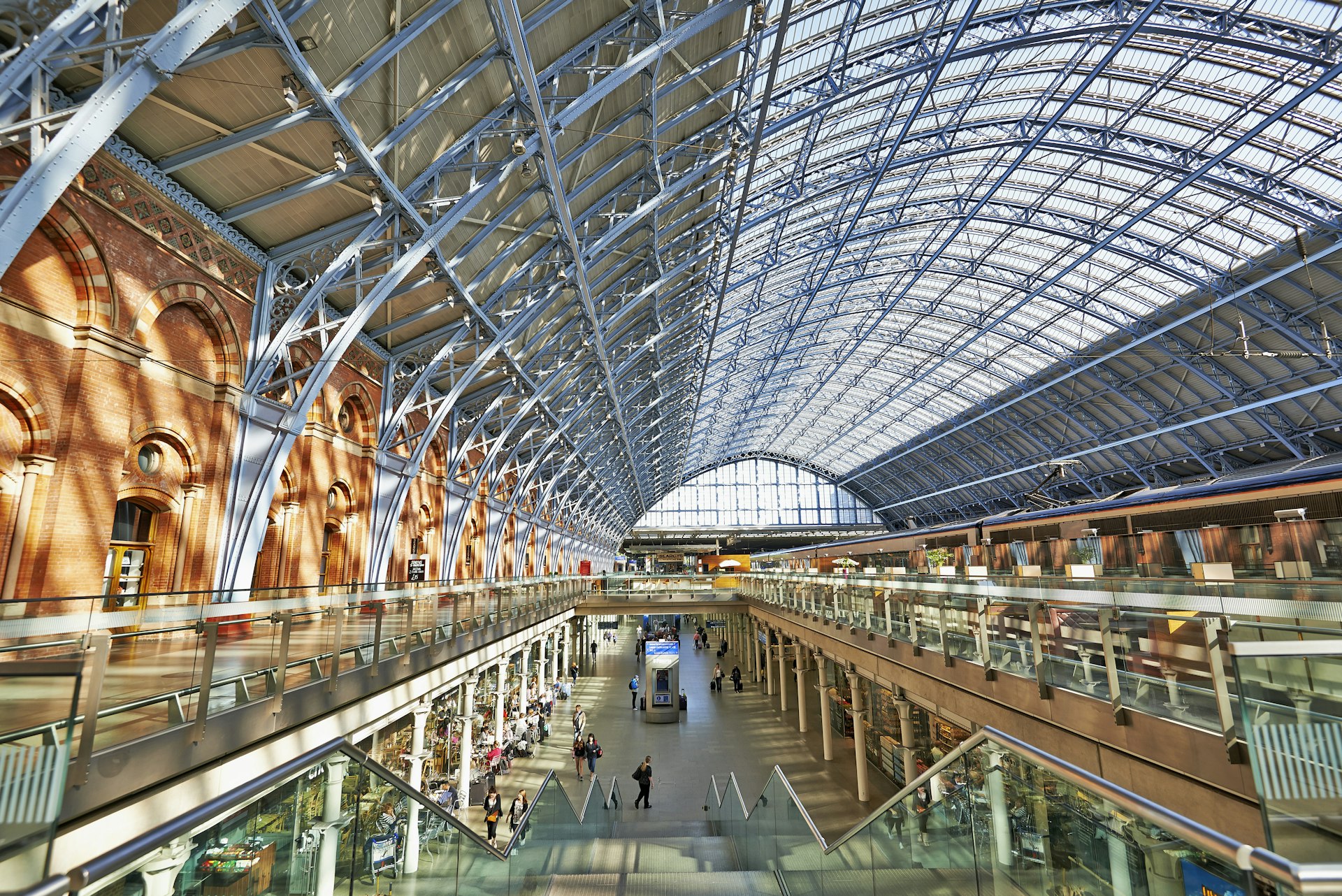
The departure
Taking the trip from London involves – as you might expect of any journey covering 1902km (1182 miles), moving eight degrees latitude north and involving a minimum of four long-distance trains – a serious day’s travel, by any benchmark. The journey begins at London’s St Pancras International, a fitting place to start any great rail adventure. The red-brick Victorian gothic masterpiece’s spectacularly renovated train shed has no equal, even 15 years after its opening for international services.
Fast, regular trains from here to Paris, Brussels and Amsterdam have felt like an antidote post-Brexit isolation, providing over the high-demand summer of 2022 a (mostly) reliable route to mainland Europe. With travelers hyper-aware of possible passport-queue delays on any journey, most people arrive well before the 45-minute cut off time to check in. So well organized was everyone on the day of my journey that the longest queue of the day was for coffee beyond the immigration desks. My tip: consider getting caffeinated before check-in, or grab a cup on the train. Or just join in the very long, very British queue – it’s all part of the fun.
The journey
Coffee in hand or no, Brussels will be the first port of call. It’s also the point of jeopardy if trying to make Stockholm in a day. Timetables will tell you – and companies selling through tickets generally suggest – that it is the German Deutsche Bahn ICE rather than the Thalys service that offers the best option for reaching Cologne, the next station toward Stockholm. Plan according to your appetite for risk: rather than play travel roulette I took a chance on making a short connection from my Eurostar to the Thalys. (I was lucky: the ICE I would otherwise have been on was canceled that morning.) A combination of (slower) regional trains from Brussels via Welkenraedt and Aachen offers a backup option. Traveling via Amsterdam and Osnabrück on the German north-south line to Hamburg is yet another route.
The good news is that however you reach this key north-south trunk line, trains to Hamburg are frequent, with many running through to Altona – the point of departure for the Stockholm train – sparing you the need to change at Hamburg Hauptbanhof station.
I loved my few hours of blissful gazing out the window at the flattening countryside, interrupted only by leg-stretching strolls to the on-board bistro for a late lunch.
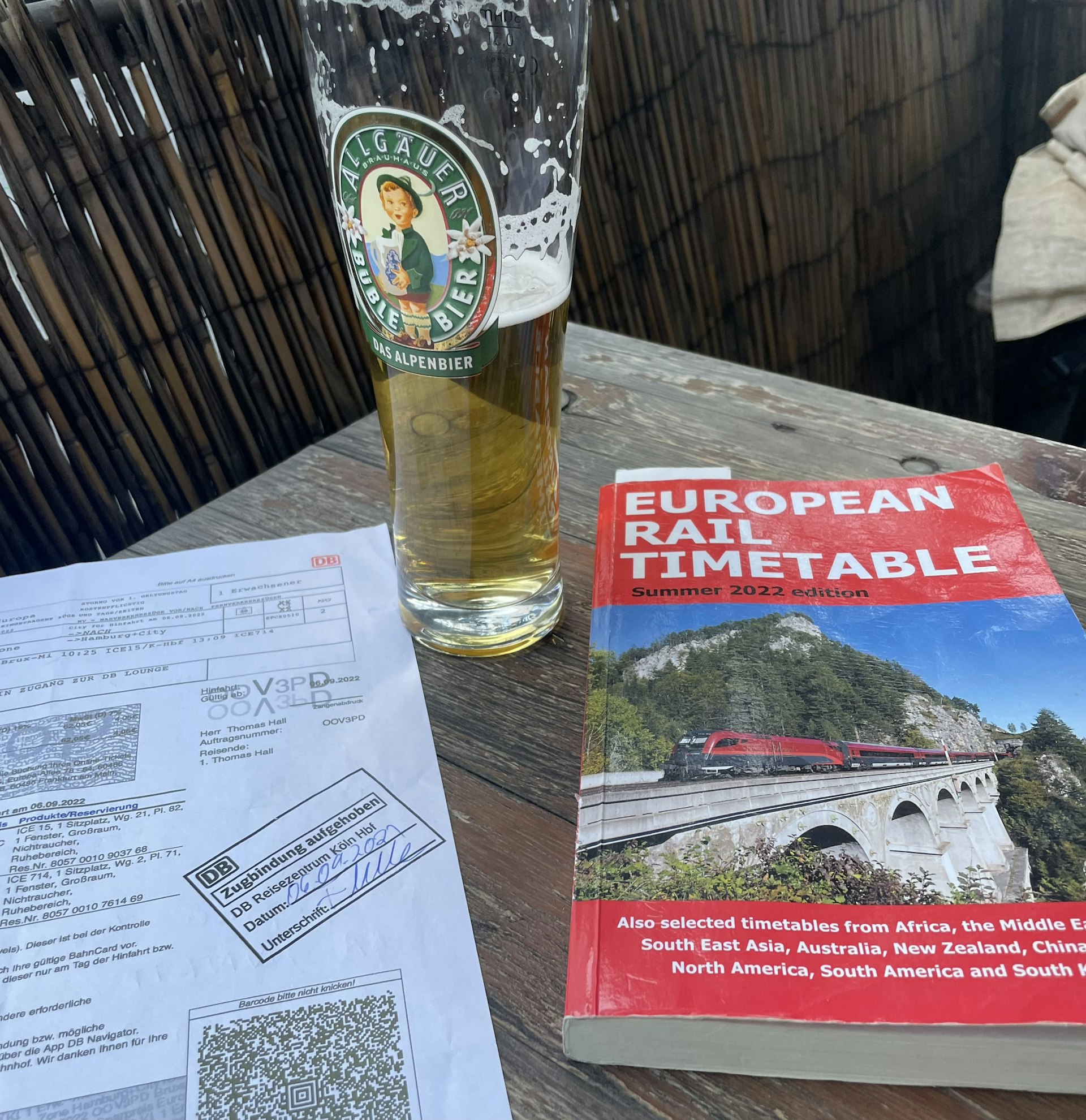
Key moments
Unless you’re very bold and opt for the tightest possible series of connections from London – which, assuming everything is on time, will get you to your final platform a nerve-shredding 20 minutes before the Stockholm train departs – you’ll have a few hours to take a break at Altona and explore a youthful, multicultural neighborhood. If, like me, you want to stop moving for a bit, grabbing a table and a beer close to the station proves an excellent use of the time. As stopping-off points go, the bars lining the streets a few minutes walk away from the evening hustle of the station proved perfect, especially on a warm summer’s evening.
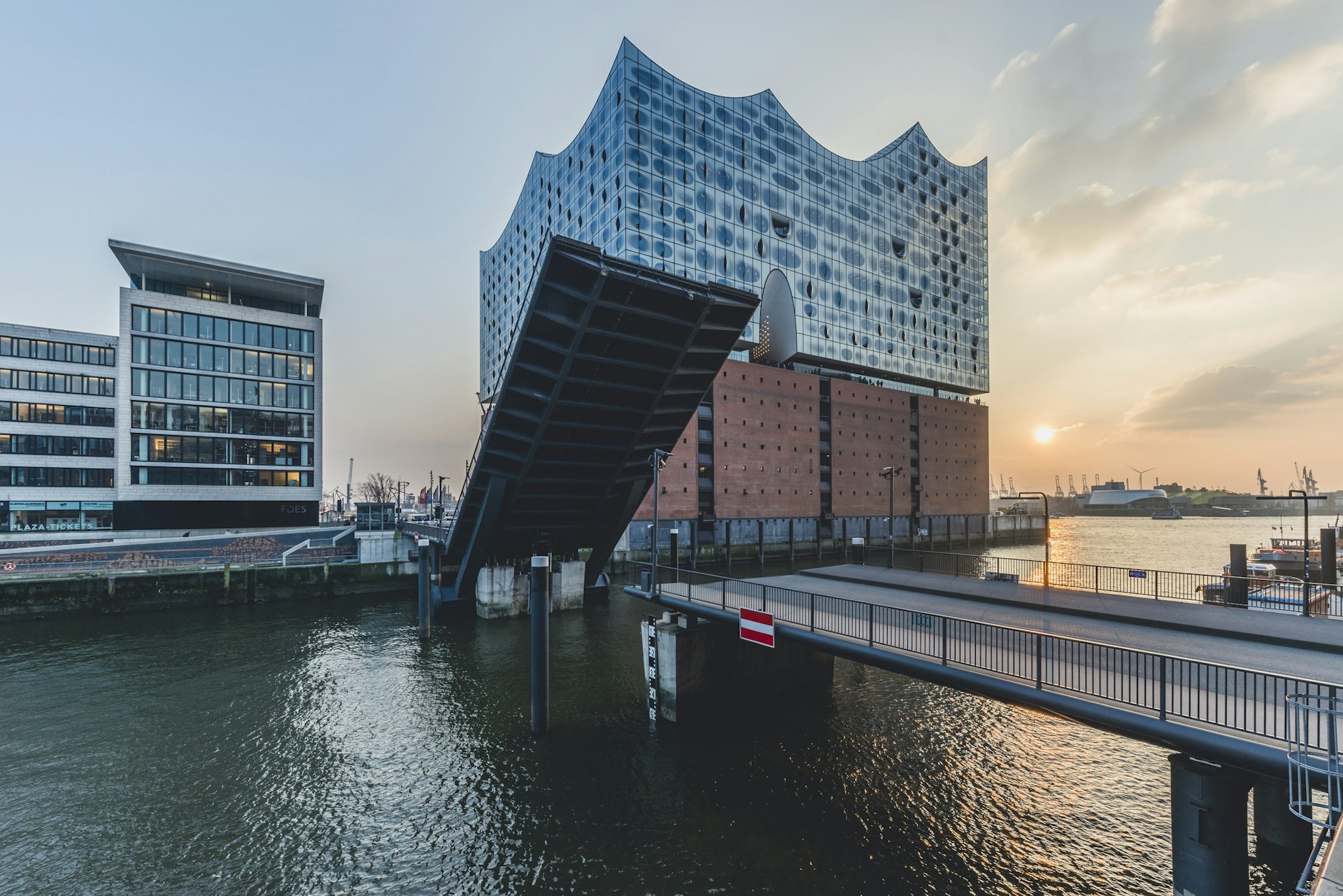
Altona is also home to a spectacular viewpoint over the Elbe toward the city’s vast container port. To see a little more of the city, a short S-Bahn ride away is the majestic Elbephilharmonie concert hall and its free viewing platform overlooking the harbor. It might be hard to manage seeing Hamburg’s vast Miniatur Wunderland, a multi-storey feast of scaled-down transport scenes, on such a tight schedule – but with more time this is a genuinely essential, unmissable Hamburg attraction. (Insider tip: Star Wars fans should pay close attention to the various craft departing the Wunderland’s tiny airport.)

Back at Altona station, excitement mounted as the departure of the sleeper approached. In the two hours before departure from platform 12, there was a flurry of night-train activity. First, the Vienna and Innsbruck-bound NightJet, complete with AutoZug car-carrying wagons, left on its long journey south. Then the Zürich-bound service departed, its mission for the evening to follow on behind the earlier service, then along the West Rhine Railway and eventually into Switzerland.
The main event started shortly after, as the Stockholm service reversed into Altona in good time for boarding and check-in. I traveled only a week into the service, when just two blue-and-green SJ-branded couchette cars made up the entirety of the train. As the train manager explained (slightly apologetically) over the intercom as we left, the carriages bearing the more expensive sleeper carriages and budget-friendly seated compartments had yet to be introduced due to some regulatory objections from Danish rail authorities. No apology necessary: this meant that the train was short, low on passengers and speedy like a rocket. I was told by train crew that all the carriages would be ready in a few weeks, at which time the train would run with six wagons year-round, increasing to nine at peak times. The starting date for full service is December 11.
Anything else?
One underreported aspect of night-train travel in Europe: they’re prone to delays. My last NightJet arrived 90 minutes late – a situation that’s far from uncommon. Avoiding urgent onward connections or appointments the morning of arrival is a smart move. Even if you are on time, you may not have slept brilliantly.
My journey to Stockholm, though, was on time pretty much throughout. It even ran smoothly through the point at which a delay seemed most likely: the German–Danish frontier in Padborg. Every passenger is subject to a passport check – at midnight. The rap on the door of your couchette by a border guard with a flashlight may evoke memories of old-school Interrail journeys, if you’re as old as me. Or it might just irritate you, considering Germany and Denmark are both members of the Schengen Area, which promises friction-free border crossings.
I wish I could tell you about the nighttime journey through Denmark. However, the ambition I had – to spend the small hours swooning over the Little and Great Belt Bridges, tracking our route through Middelfart and Odense, then skirting Copenhagen and over the Öresund Bridge – was cancelled out by a pretty smooth night’s sleep.

The arrival
Once in Sweden the train rolled north for five hours before reaching the capital. Waking up on a night train somewhere new is a magical part of the journey, with the promise of a morning arrival in a new destination. A misty dawn over very Nordic forests and lakes added to the excitement, and felt a long way indeed from London’s rush hour.
We arrived on time into Stockholm, at 9:55am. This meant more time than on some sleeper services for the on-train breakfast (€9.40 for a bread roll and jam plus all-you-can-drink coffee) and to watch the Swedish countryside roll by. The train terminated at another great cathedral of railway travel, Stockholm’s Central Station, with its graceful curved waiting area and, stately Stockholm’s fusion of water, land and modern living beyond. Once you arrive, it's the perfect time to try our all the best things to do in Stockholm.
Where do the tracks lead from here?
The rails stretch on from here. One more night train (all 18 hours of it) runs on to Narvik in Norway, Europe’s northernmost railhead.

More information on the Hamburg-to-Stockholm EuroNight train
Best time to go
The right combination of long daylight hours and lower crowds make May and June the best time to travel north.
Food and drink during the journey
Eurostar, InterCity services and the EuroNight train all have on-board bistros open for at least some of the journey. Stations are crowded with eating options along the route, which means you’re only a few steps away from being able to economize with a train picnic.
Tickets
Cheapest fares on this route cost around $130, though how much you pay will vary depending on how far in advance you book, which class you travel you prefer and the type of accommodation you opt for on the night service. I paid $180 for my ticket.
Eurostar tickets go on sale up to 120 days in advance, and it is well worth booking as early as possible. A combination of higher overall fares and fewer services have made this a more expensive option of late – though opting for early departures helps. Other train bookings open 90 days in advance. National carriers offer bookings for domestic and international services, as do Eurostar and Trainline.com.
Transport
London and Stockholm are excellent hubs for onward rail, coach and air travel.
Accommodation (at either end)
Accommodation at all ends of the price spectrum can be found close to St Pancras in London and Stockholm Central.

